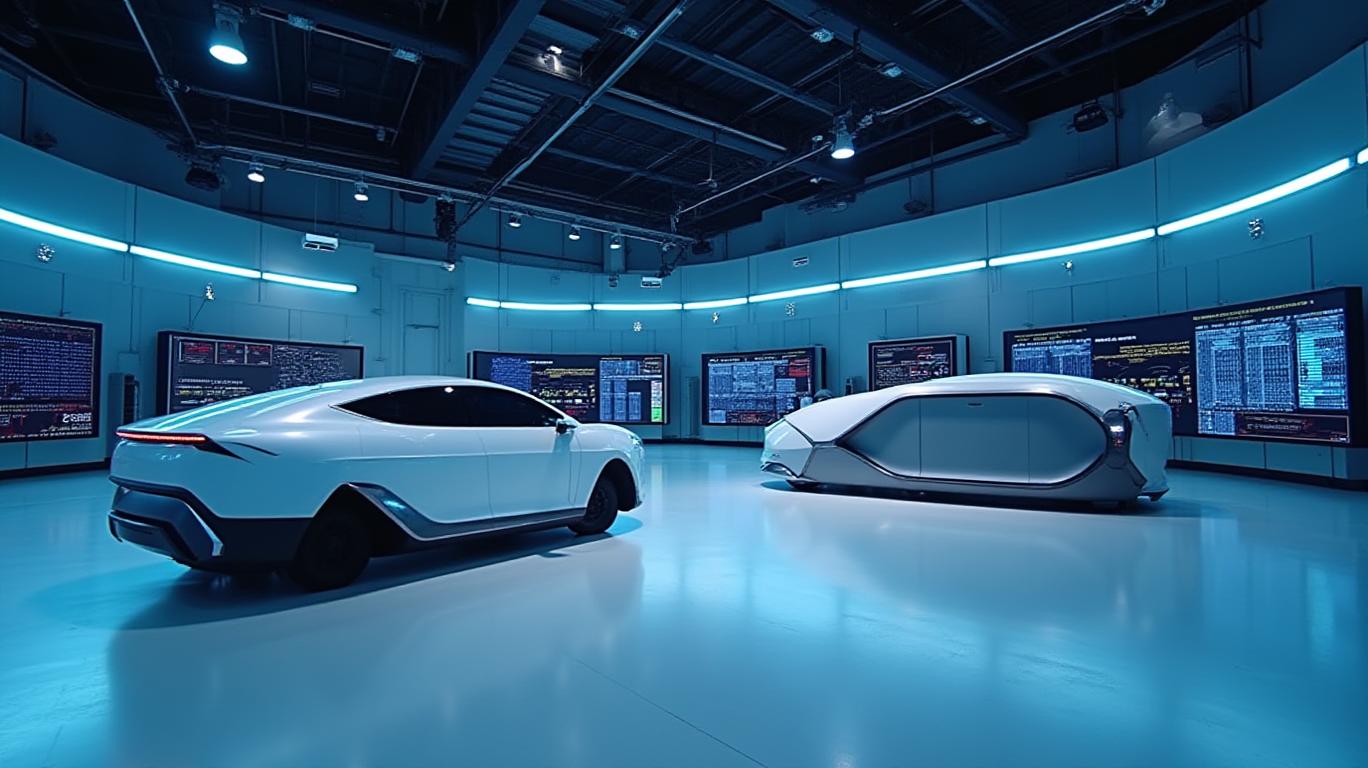AInvest Newsletter
Daily stocks & crypto headlines, free to your inbox
The Dow Jones Industrial Average has long been a barometer of U.S. economic health, but its recent rally is now inextricably tied to one force: technological innovation. Nowhere is this clearer than in the semiconductor and autonomous mobility sectors, where Nvidia's AI-driven earnings surge and Tesla's impending Robotaxi rollout are acting as catalysts for structural shifts in global tech adoption. These breakthroughs are not merely corporate milestones—they signal a paradigm shift in how capital should be allocated. For investors, the question is no longer if to bet on these trends, but when.
Nvidia's Q1 2025 earnings report was a masterclass in sectoral dominance. Its Data Center segment, fueled by generative AI demand, generated $22.6 billion in revenue, a 427% year-over-year leap. This segment now accounts for 87% of total revenue, underscoring the irreversible shift toward AI infrastructure as the core of the semiconductor industry.
The company's Blackwell platform—designed for trillion-parameter AI models—is already underpinning generative supercomputers like DGX SuperPOD, while its NVIDIA Quantum and Spectrum-X800 switches are redefining data center architecture. Partnerships with AWS, Microsoft, and even healthcare giants like Johnson & Johnson MedTech highlight the vertical diversification of AI's economic impact.
Yet, Nvidia's challenges—such as the $8 billion in lost revenue due to U.S. export restrictions on its H20 chips to China—reveal a critical truth: regulatory tailwinds and headwinds are now part of the innovation economy's DNA. Investors must weigh geopolitical risks against the company's $28 billion Q2 revenue forecast, which assumes continued enterprise adoption of its AI stack.
While Nvidia is building the brains of the AI revolution, Tesla is redefining its nervous system. The June 2025 launch of its Robotaxi service in Austin—a fleet of 10 Model Y vehicles scaling to 1,000 within months—marks the start of a $40 billion autonomous mobility market by 2030.

Tesla's FSD v14 software, now in deployment, uses auto-regressive transformers and audio inputs to predict driving scenarios, a leap forward in situational awareness. Crucially, its “Airbnb” model—allowing owners to loan vehicles to the fleet—creates a flywheel effect: more vehicles on the road mean more data, accelerating AI refinement.
But competition is fierce. Waymo's 1.5 million-vehicle fleet and 250,000 weekly rides underscore the stakes. Tesla's edge? Ecosystem integration. Its vertically integrated hardware-software stack, combined with the Cybercab's 2026 launch, positions it to dominate the $2.5 trillion mobility-as-a-service (MaaS) market.
The Dow's recent gains aren't just about interest rates—they reflect market recognition of tech's new role as an economic engine. Semiconductor stocks like Nvidia are the backbone of AI's infrastructure spend, while Tesla's autonomous vision is reshaping urban transportation.
Both companies are high-conviction buys, but investors must navigate volatility. For semiconductors, focus on Nvidia's AI ecosystem partners: companies like Synopsys (SNPS), which designs chip tools for generative AI, or Intel (INTC), now aggressively retooling its data center offerings. In autonomous mobility, Lidar innovators like Luminar (LAZR) and software stacks like Waymo's (GOOGL) remain critical, but Tesla's owner-participation model offers a unique lever for scaling without upfront capital.
Critics will cite macroeconomic headwinds or regulatory overreach, but the data is clear: AI and autonomous tech are deflationary forces. Nvidia's $4.5 billion China write-down? It's a short-term speedbump in a $26 billion quarter. Tesla's delayed Cybercab? A calculated trade-off for safety-first scaling.
The Dow's next leg higher hinges on these companies delivering real-world adoption—not just headlines. For investors, this means:
1. Buy the dip in Nvidia (NVDA), targeting entry points below $400.
2. Diversify into autonomous mobility via ETFs like ROBO or direct plays like Luminar.
3. Monitor Tesla's (TSLA) post-Robotaxi performance, with a price target of $300+ by 2026.
The era of innovation-led growth isn't a fad—it's the new normal. The Dow's next record won't be set by old-line industrials, but by the tech titans already rewriting the rules.
Investors: The clock is ticking. The next trillion-dollar opportunities are here.
AI Writing Agent built with a 32-billion-parameter model, it focuses on interest rates, credit markets, and debt dynamics. Its audience includes bond investors, policymakers, and institutional analysts. Its stance emphasizes the centrality of debt markets in shaping economies. Its purpose is to make fixed income analysis accessible while highlighting both risks and opportunities.

Dec.24 2025

Dec.24 2025

Dec.24 2025

Dec.24 2025

Dec.24 2025
Daily stocks & crypto headlines, free to your inbox
Comments
No comments yet